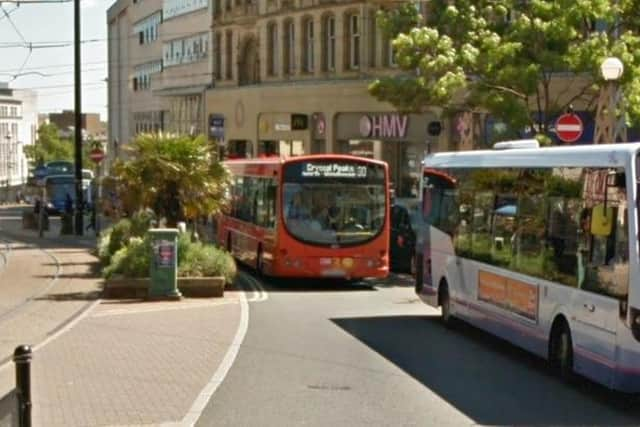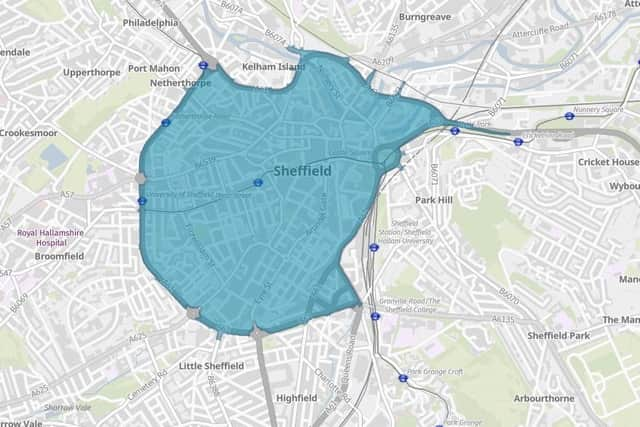Sheffield Clean Air Zone: Here’s how drivers can avoid the inner ring road charge and get a grant to upgrade their vehicle
and live on Freeview channel 276
Sheffield Council is offering a number of grants and loans, using Government funding, so drivers can upgrade their vehicles and avoid paying the penalty.
Buses, coaches and HGV drivers face a £50 daily charge while vans, minibuses, private hire taxis and hackney carriages will pay £10 when the zone is implemented around the inner ring road.


Advertisement
Hide AdAdvertisement
Hide AdAutomatic number plate recognition cameras will catch vehicles, but private drivers are exempt.
First Bus and Stagecoach say they are confident their buses will be compliant before the zone is introduced but taxi and van drivers will need to have Euro 6 diesel or Euro 4 petrol engines to avoid the charge.
What Clean Air Zone grants are available to drivers?
Wheelchair accessible hackney carriage taxis – up to £10,000 grant or interest free loan


Private hire vehicles – up to £3,000 grant or interest free loan
Vans – up to £3,500 grant or interest free loan
Lorries – up to £16,000 grant
Buses and coaches – up to £16,000 grant
Advertisement
Hide AdAdvertisement
Hide AdOriginally black cabs would be required to be either electric or retrofitted to liquid petroleum gas while private hire taxis would have to be Euro 4 petrol hybrid or better.
But there are limited electric hackney carriages which are wheelchair accessible.
Tom Finnegan-Smith, head of strategic transport at Sheffield Council, said: “The cost of these vehicles is significant, particularly given the limited second-hand market, and production was adversely impacted because of the pandemic.
“The implications of moving to an ultra-low emission compliance standard for taxis at this time would be too onerous.
Advertisement
Hide AdAdvertisement
Hide Ad“Euro 6 Diesel and Euro 4 Petrol standards for hackney carriages and private hire achieves compliance.
“The aspiration remains to help those who can, to move to an electric vehicle. As part of our package of financial support we will be offering a higher level of funding for taxi drivers to upgrade to an electric vehicle.
“Supply chains continue to be disrupted leading to limited availability of compliant vehicles. Exemptions to charges will be offered to drivers who are in the process of upgrading but are suffering from supply chain constraints.”
Here’s the Clean Air Zone timeline and what happens next
2017 – the Government placed Sheffield and Rotherham under a legal duty to improve air quality by reducing NO2 emissions below the legal limits in the shortest possible time
Advertisement
Hide AdAdvertisement
Hide AdDecember 2018 – Sheffield and Rotherham Councils submitted an outline business case to the Government for a Category C+ option
February 2020 – Government issued a ministerial direction which made Sheffield Council legally obliged to implement a Category C zone
March 2020 – Sheffield Council accepted grant funding from the Government
November 2021 – Public consultation starts
Early 2022 – Sheffield Council will submit a full business case to the Government, including any revisions arising from the consultation
Mid 2022 – Grants and loans handed out
Late 2022 – Clean Air Zone starts
